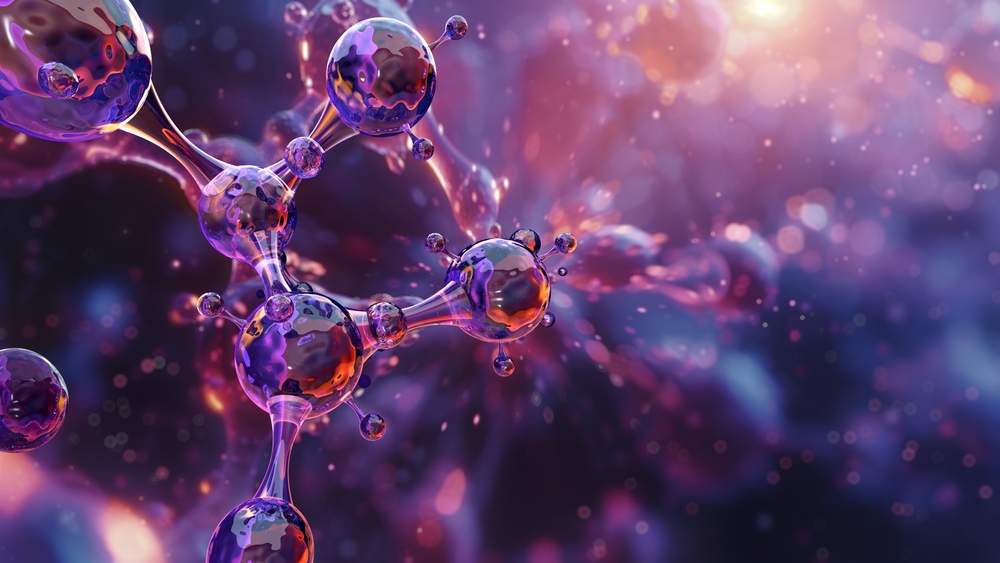Due to differences in their molecular structure, small and large molecules require different bioanalysis processes. In this blog, we review those differences to help you plan for preclinical lab testing.
Small molecules are compounds with relatively low molecular weights (typically under 900 Daltons) that are designed to interact with specific targets in the body to achieve therapeutic effects. Typically synthesized chemically, small molecules form the foundation of many traditional pharmaceuticals widely used in treating various diseases. In fact, small molecule drugs represent about 90% of all approved medicines.
Large molecules are complex biological compounds like proteins, antibodies, nucleic acids, and peptides, often synthesized through biotechnological methods. These larger compounds play a key role in the development of biopharmaceuticals, especially in therapies targeting cancer, autoimmune diseases, and chronic conditions.
Given these differences, small and large molecules require distinct analytical approaches for bioanalysis—the process of identifying and quantifying drugs and their metabolites in biological matrices like blood, urine, and cerebrospinal fluid. This bioanalytical testing provides critical insights into drug concentration and physiological impact, making it a cornerstone of drug development.
To effectively plan preclinical testing, it’s essential to understand how the unique attributes of small and large molecules influence their respective bioanalysis processes. Here are the key differences that will help guide different testing strategies.
7 Key Differences for Small vs. Large Molecule Bioanalysis
1. Molecular Structure and Complexity
Small Molecules
Small molecules have a simple, well-defined structure characterized by low molecular weight. Their smaller size allows them to penetrate cell membranes and interact with intracellular targets easily, making them a fundamental component of many pharmaceutical treatments.
In bioanalysis, the simpler structure of small molecules typically allows for more straightforward characterization and analysis. Techniques like Liquid Chromatography-Mass Spectrometry (LC-MS/MS) are often employed due to their high sensitivity and suitability for routine analysis.
Large Molecules
Conversely, large molecules present a more complex challenge due to their intricate and larger structures with higher molecular weights. These molecules usually interact with extracellular receptors or pathways, as their size often prevents them from quickly crossing cell membranes.
Large molecules require more advanced analytical methods due to their complex structures. Techniques such as ligand-binding assays (LBAs) or hybrid approaches that combine chromatographic and immunoassay methods are commonly used to capture these larger entities’ structure and biological activity.
2. Analytical Techniques
Small Molecules
Small molecules are primarily analyzed using techniques such as Liquid Chromatography coupled with Mass Spectrometry (LC-MS), Gas Chromatography (GC), and Ultraviolet (UV) spectroscopy.
Small molecule analytical methods are specifically tailored to the small size and simpler structure of small molecules, enabling precise and efficient analysis.
RELATED: 7 Most Common Bioanalytical Testing Platforms for Small and Large Molecule Bioanalysis
Large Molecules
In contrast, large molecules require more specialized analytical techniques due to their complex and sizable structures. Standard methods include Immunoassays like Enzyme-Linked Immunosorbent Assay (ELISA), LC-MS/MS with specialized detectors, and Surface Plasmon Resonance (SPR) for binding studies.
These large molecule analytical techniques are designed to address the complexities inherent in analyzing large biologics.
3. Pharmacokinetics
Small Molecules
Small molecules generally have shorter half-lives, leading to rapid absorption and elimination from the body. This characteristic necessitates frequent sampling and monitoring over shorter time frames to capture pharmacokinetic profiles accurately. Bioanalysis of small molecules often requires highly sensitive and specific assays, particularly at low drug concentrations, to account for their potency.
Large Molecules
Large molecules, on the other hand, typically exhibit longer half-lives due to slower absorption and clearance mechanisms, such as proteolysis or receptor-mediated endocytosis. Consequently, bioanalysis of large molecules involves less frequent sampling but requires more detailed studies. These studies must be highly specific and sensitive to fully understand large molecules’ prolonged pharmacokinetics and unique distribution patterns.
Detecting various isoforms, post-translational modifications, and aggregation states adds further complexity to their analysis.
4. Sample Preparation and Analysis
Small Molecules
Sample preparation for small molecules is generally straightforward, often involving simple procedures like protein precipitation or liquid-liquid extraction. This simplicity allows for quicker turnaround times and higher throughput in bioanalysis.
RELATED: How Bioanalytical Laboratory Automation Improves Timelines and Accuracy
Large Molecules
Large molecules require more complex sample preparation techniques, such as immunoprecipitation, affinity purification, or enzymatic digestion. These intricate processes necessitate specialized equipment and expertise, increasing the testing process’s complexity and duration. Detailed preparation is essential to obtain accurate and reliable bioanalytical data for large molecules.
5. Data Analysis
Small Molecules
Data analysis for small molecules typically involves quantitative analysis with relatively straightforward interpretation. Given their simpler structure and predictable behavior, the data generated from small molecule bioanalysis is usually easier to process and interpret.
Large Molecules
In contrast, the data analysis for large molecules can be more complex due to the need to account for factors such as binding affinities, molecular heterogeneity, and functional activity. This complexity requires more sophisticated data processing methods and a deeper understanding of the molecule’s behavior to interpret the results accurately.
6. Stability and Storage
Small Molecules
Small molecules are generally more stable under various conditions and can often be stored for more extended periods without significant degradation. This inherent stability simplifies the bioanalysis process, reducing the likelihood of encountering issues related to sample degradation.
Large Molecules
Large molecules are more prone to degradation and require stringent storage conditions, often involving cold chain logistics and careful handling to maintain their stability. Bioanalysis of large molecules must consider their stability throughout the entire analytical process, from sample collection to final analysis, to ensure accurate and reliable results.
7. Regulatory Requirements
Small Molecules
The regulatory guidelines for small molecules are well-established, with clear expectations for validation, standardization, and compliance. This mature regulatory framework benefits small molecule bioanalysis by streamlining the validation process and ensuring consistent standards.
Large Molecules
Regulatory guidelines for large molecules, particularly novel biologics and biosimilars, are still evolving. This ongoing development requires more detailed method validation and documentation, as large molecules often face greater regulatory scrutiny. As a result, bioanalysis of large molecules involves careful adherence to evolving guidelines and may require additional validation efforts.
Conclusion
Recognizing the unique properties of small and large molecules is vital for an effective bioanalysis strategy. Their distinct characteristics demand tailored approaches to ensure accuracy, which is pivotal for the success of drug development.
Partnering with an organization that knows these differences and has experience working with both small and large molecules will help you overcome common hurdles in planning your preclinical testing. Regardless of the molecule type, your testing partner needs to take a specialized approach to assess your drug candidate’s safety, efficacy, and pharmacological properties before clinical trials and regulatory approval. WuXi AppTec offers end-to-end services in both small and large molecule bioanalysis, providing the expertise and advanced technology needed to guide a drug from discovery through regulatory submission with precision.
Learn more about WuXi AppTec’s bioanalytical services or talk to an expert today.
As a global company with operations across Asia, Europe, and North America, WuXi AppTec provides a broad portfolio of R&D and manufacturing services that enable the global pharmaceutical and life sciences industry to advance discoveries and deliver groundbreaking treatments to patients. Through its unique business models, WuXi AppTec’s integrated, end-to-end services include chemistry drug CRDMO (Contract Research, Development and Manufacturing Organization), biology discovery, preclinical testing and clinical research services, helping customers improve the productivity of advancing healthcare products through cost-effective and efficient solutions. WuXi AppTec received an AA ESG rating from MSCI for the fourth consecutive year in 2024 and its open-access platform is enabling around 6,000 customers from over 30 countries to improve the health of those in need – and to realize the vision that “every drug can be made and every disease can be treated.”


